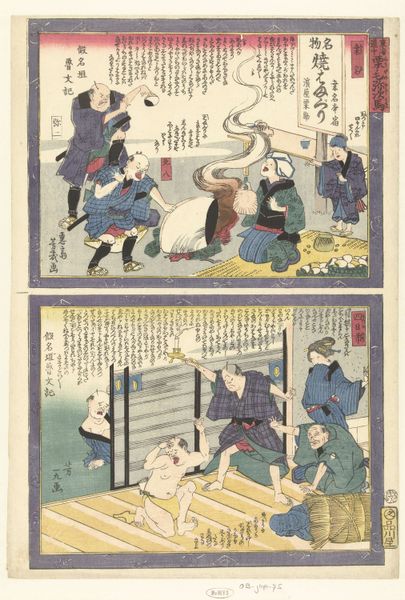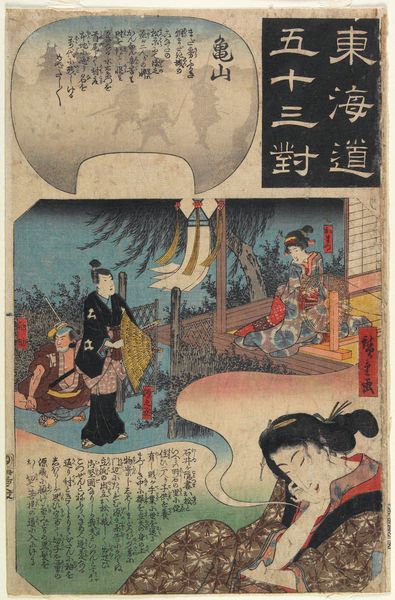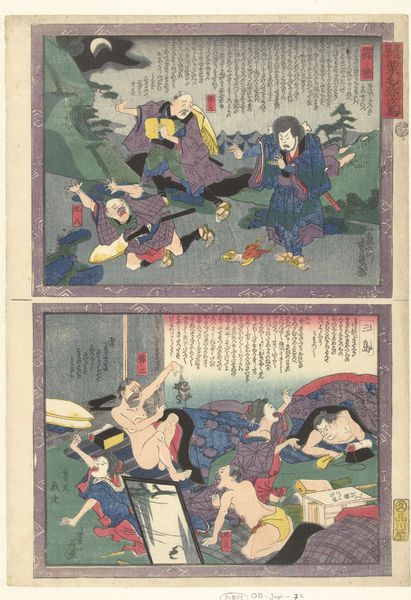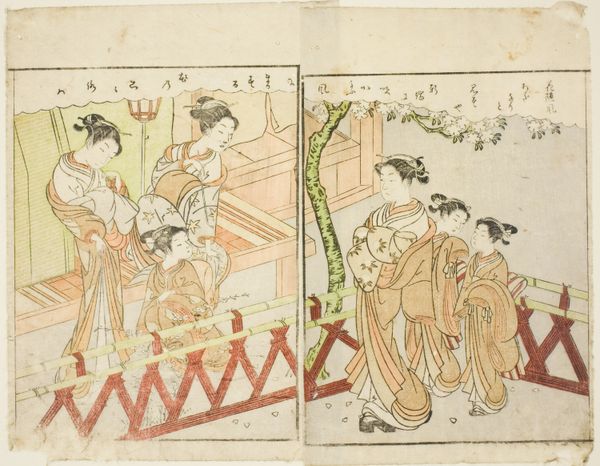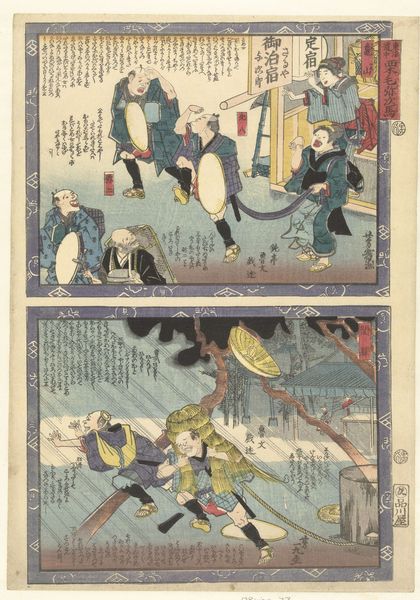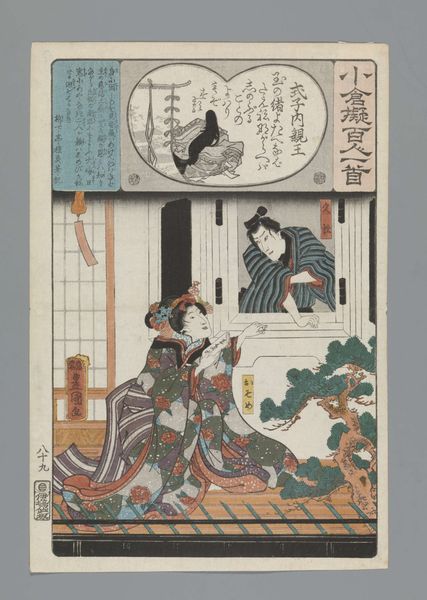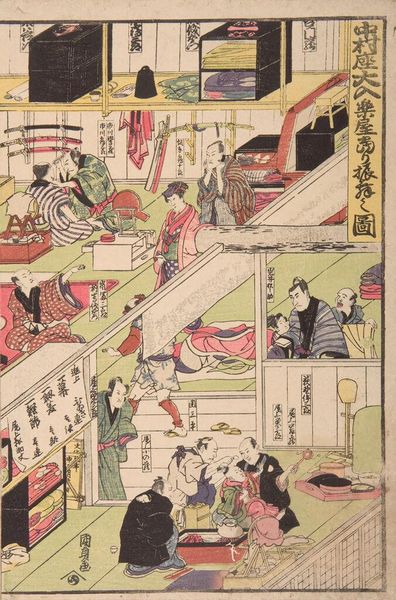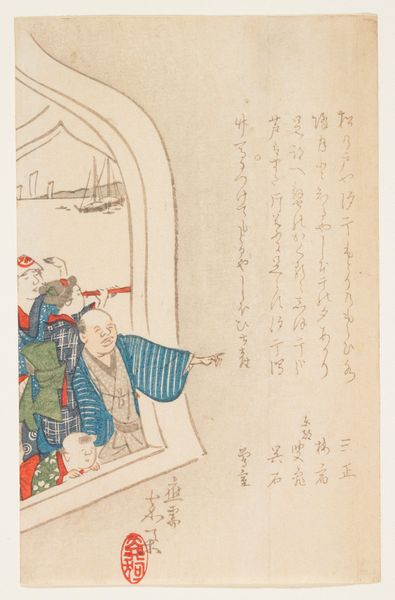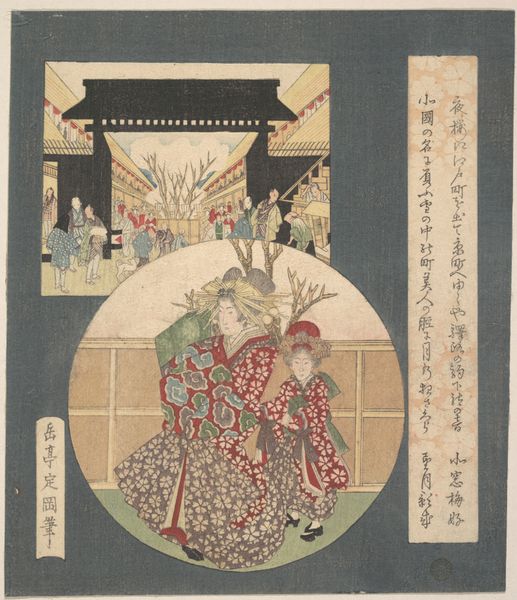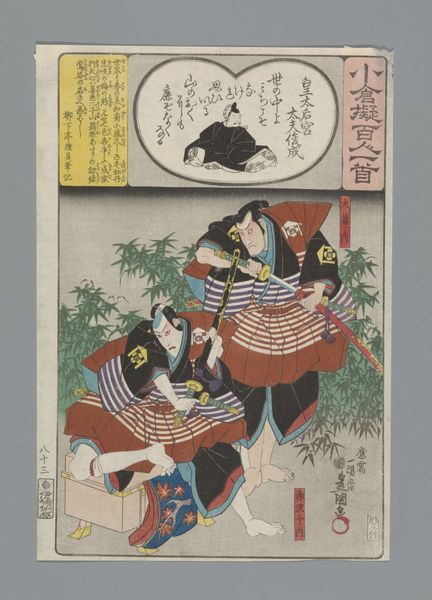
print, woodblock-print
#
narrative-art
# print
#
dog
#
asian-art
#
landscape
#
ukiyo-e
#
figuration
#
woodblock-print
#
watercolour illustration
Dimensions: height 377 mm, width 259 mm
Copyright: Rijks Museum: Open Domain
Curator: Here we have Utagawa Yoshiiku’s woodblock print "Ishiyakushi en Shono" from 1860, currently held at the Rijksmuseum. Isn’t it evocative? Editor: It is! The composition immediately strikes me – it's divided into two distinct scenes, almost like snapshots. A blend of the bustling and the bizarre, wouldn’t you say? Curator: Absolutely. It’s typical of Ukiyo-e prints to capture slices of everyday life with a touch of the theatrical. Look at the top panel; it's a bustling tea house, lively and mundane at the same time, whereas the lower section features an unlikely interaction happening in a rural setting. Editor: Yes, the teahouse is rather amusing with its depiction of daily rituals elevated into a narrative scene. In the upper part, the watchful dog is barking at passersby as one geisha is going outside the house while costumers have some refreshments. The dog may refer to the social life happening in that precise place and instant. Curator: I find that the lower scene hints at something far stranger. A woman seemingly caught in an absurd situation by a man with some sharp-bladed weapon. This could symbolize sudden danger. Editor: The woman in the lower scene, stumbling amongst the rice fields near the stylized tree...it almost feels as though she is caught between worlds, doesn’t it? Rice has historically symbolized fertility, wealth, good fortune, the archetype of mother figure, while the tree evokes themes of refuge. Is she finding refuge from an unknown issue related to one the archetypes that I have previously cited? The iconography creates so many possibilities. Curator: And Yoshiiku makes wonderful use of the woodblock medium. It emphasizes those narrative moments with precision, though his focus isn't just visual documentation, it's imbued with emotion. He wasn’t afraid of satirizing certain social conventions, don’t you think? Editor: Most assuredly. These scenes offer not just visual interest but serve as time capsules filled with socio-historical references, and as a symbolic meditation on stability and instability that continues to reverberate even now. What did people value then and what fears or dreams are hidden behind seemingly benign depictions of daily life? It's captivating. Curator: Looking at "Ishiyakushi en Shono", it brings one closer to that feeling that time is fluid and fleeting, a feeling that, paradoxically, art makes more persistent than anything else. Editor: I concur; the resonance and symbols encoded within these frames transcend simple observation, offering a complex emotional tableau where the ephemeral feels intriguingly perpetual.
Comments
No comments
Be the first to comment and join the conversation on the ultimate creative platform.


